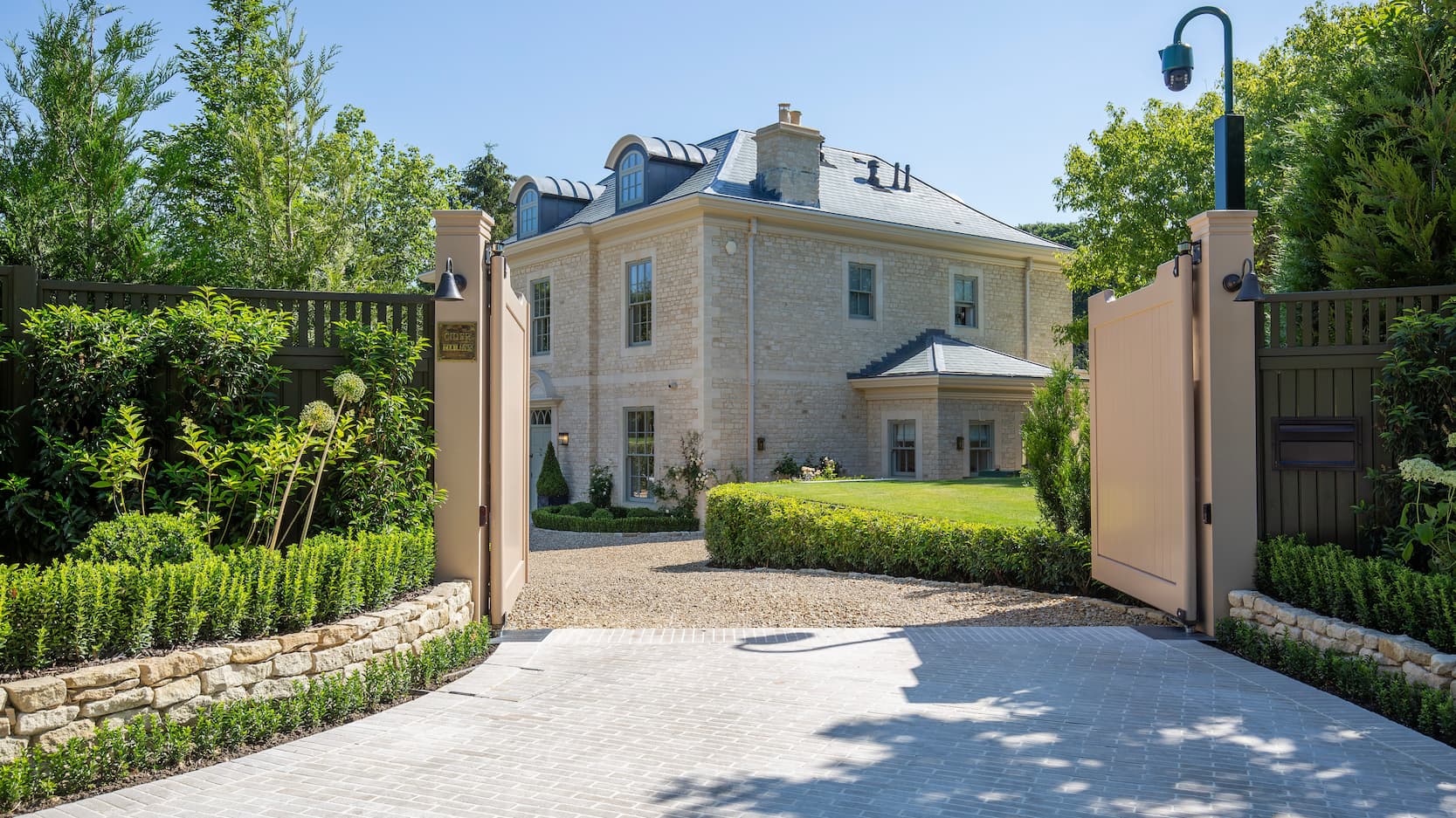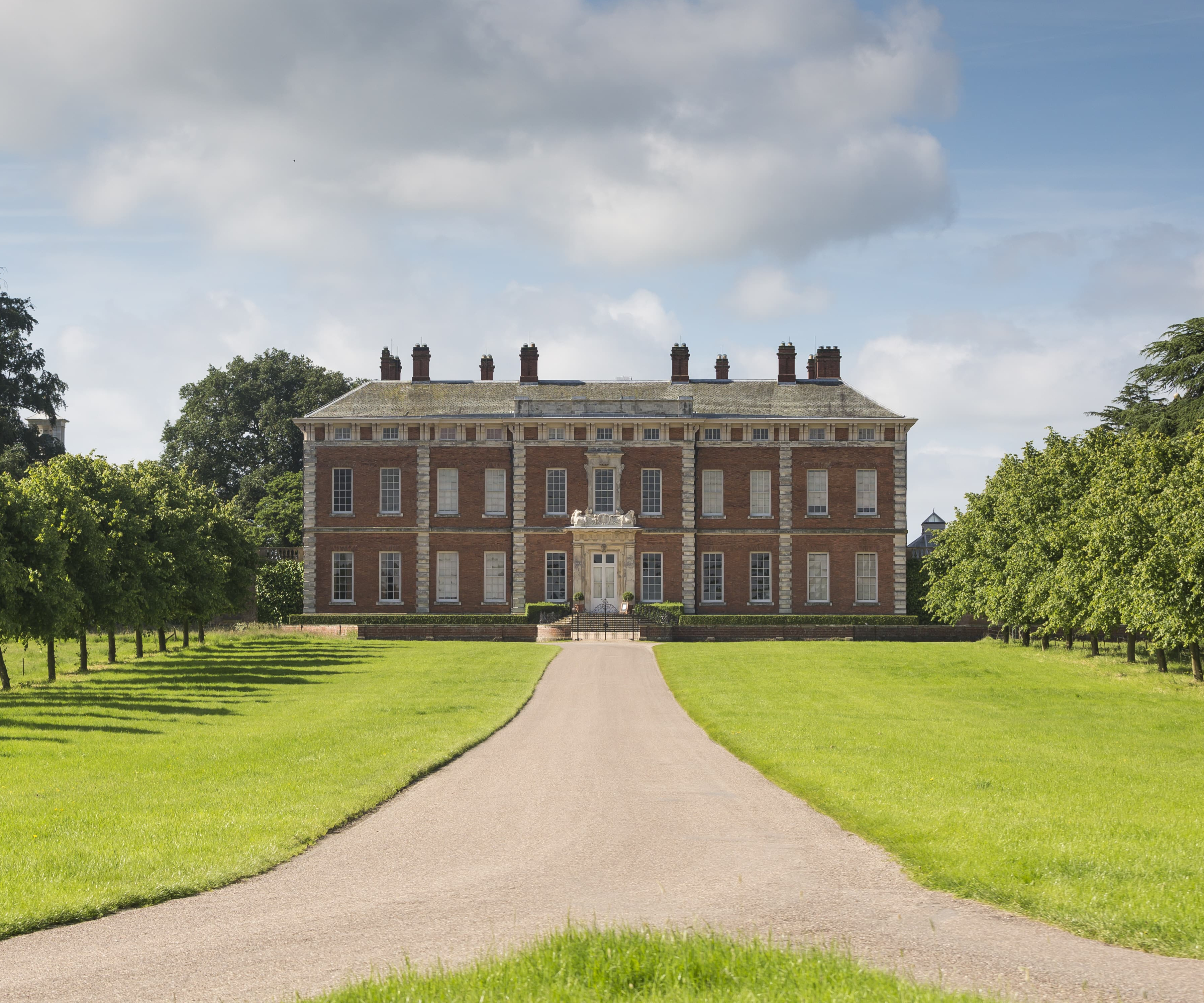
Long driveway ideas are a hallmark of the UK’s stately homes and rural estates, and they’re sometimes installed at large urban or suburban properties too.
Their main purpose is access. If the entrance to a property is far from the building itself, you’ll need a long driveway for convenient access by car.
“Ultimately, the length is determined by the property and the land it sits on,” says John McGinlay, director of the award-winning driveway specialist, Paramount Paving.
“A long driveway will always look grander, but you’re bound by the property. When the house is 100 meters from the road, you’ll need a long driveway.”

John McGinlay is director of Paramount Paving, an award-winning driveway and patio specialist. Founded in 1988, the company has worked on thousands of installations around Kent, London and Essex.
The possible exception is when self-builders plan and install a long driveway, even though their plot might allow for a shorter one. A longer approach could emphasise the scale of a building or draw attention to architectural features, although it will impact your driveway costs and limit the availability of space for other garden ideas.
We interviewed a driveway installer, a paving specialist and a property agent to learn how a longer driveway affects a property’s look, project budget and practical considerations such as driveway drainage. Whether you’re planning a long driveway through necessity or choice, their advice will help make your project a success.
Planning your driveway length
When planning a driveway, you must decide where the driveway will meet the forecourt, which is a wider paved section adjoining the home.
Bring your dream home to life with expert advice, how to guides and design inspiration. Sign up for our newsletter and get two free tickets to a Homebuilding & Renovating Show near you.
If your household keeps multiple vehicles outdoors, you may require a large forecourt that shortens the roadway section of your driveway. If you have only one vehicle, you might have a long driveway leading to a smaller forecourt instead.
For reference, the British Parking Association advises that the standard size for a parking space in the UK is 2.4 metres wide by 4.8 metres long, while 6 metres of manoeuvering space is required for parking.
If your property is going to have a long driveway design, it’s worth accounting for how this will factor into day-to-day activities. Couriers and supermarket delivery drivers may require instruction on how to reach the property. And if you have electric driveway gates, these should be equipped with an intercom (possibly with remote connectivity) so that you can conveniently communicate with visitors.
You may also want to look at dedicated driveway lighting ideas to ensure adequate visibility from the driveway entrance to the forecourt.

The addition of driveway lights can make the approach to your home both safer and more welcoming. This set of ten is very easy to install into a lawn or verge.
Regulations for driveway length
Planning permission for driveways isn’t usually required for laying or lengthening a driveway, unless you’re in a Conservation Area with more stringent requirements.
However, the driveway will need to meet Government rules on front garden surfacing focused around drainage – and a longer driveway usually requires a more robust solution.
“In 2008, the Government brought in regulation to help prevent flooding,” McGinlay explains.
“Because so much land was getting paved over at that time, we were losing a lot of grass and soft verges. The only place for the rainwater to go was off the driveway, onto the footpath, and into the main drains which couldn’t cope.
“The law now states any rainwater that falls on your land in an area over 5 square metres has to be contained on your land.”
One possible solution is to use a permeable surface material such as resin, but rainwater can also be dealt with by incorporating drainage into the driveway design.
“At the entrance to your driveway there should be a drain grid, which takes the water into an underground chamber called a soakaway for driveways,” says McGinlay.
“We put soakaways in pretty much all projects, especially where the driveway falls towards the road. The size of the soakaway is subject to that of the driveway, so a longer driveway will require a bigger soakaway. But in some cases part of a driveway will drain onto the lawn, so drainage is not needed for that section.”
Some driveway projects will require the installers to work in and around a public right of way, such as a road or footpath. This is always subject to permission from the relevant local authority.
“If you’re working on a property and need to put materials on the highway, you need a permit from the council,” says McGinlay.
“We also put up barriers to prevent people from falling into the driveway while work is ongoing.”

Isabel Fernandez is a Director at Quorn Stone, a stone and tile specialist which provides materials for both outdoor and household use.
Aesthetics and materials
A long driveway can become an aesthetic feature of a property, as well as a practical facility. If it’s straight, it can highlight the symmetry of a building’s architecture and surrounding landscape, as seen at the National Trust property, Beningbrough Hall, in the photo below. Meanwhile, a meandering driveway can gradually reveal interesting architectural features.
The chosen driveway materials greatly affects the finished look of the driveway. Isabel Fernandez, a director at the tile and stone provider Quorn Stone, recommends limestone or sandstone cobbles for longevity and an impressive welcome to the property.
“Not not only do these materials provide an attractive aesthetic; they’re also extremely hard-wearing and dense, making them suitable for driveways with heavy vehicle traffic,” says Fernandez.
“The smaller format of these cobblestones creates a classic and timeless appeal. Popular laying patterns include brick bonds, as well as herringbone which is particularly effective at leading the eye along a driveway.”
Cobbles are an example of block paving – one of four types of material commonly used to surface driveways.
“There’s old-fashioned tarmac, paving slabs, block paving (which is the most popular option), and the new trend has been resin,” says McGinlay.
“Resin is very good for allowing water to drain through, but this will only work if you’ve got really good soil for drainage. If the soil is clay-rich, the water won’t have anywhere to go.
“Block paving is the most popular option because it’s the simplest choice long-term. The blocks can be lifted and relaid, so if there’s a problem such as a utility leak you can pull up some paving, repair the issue and then relay the paving without leaving a trace.”

Budgeting for driveway length
As you’d expect, the larger a driveway is, the more it will cost to install and maintain. “The bigger the driveway is, the higher the price,” says McGinlay.
“Having said that, things like bulk buying come into it, so if you’re buying 200 square metres of surfacing material instead of 10 square metres, you might get a slightly better rate.”
There may also be economies of scale when adding driveway features such as lighting.
“It doesn’t make things much more complicated to have ten lights in a circuit, rather than five,” says McGinlay.
“On the other hand, if you’re carrying through a traditional pattern like herringbone when laying block paving, a longer driveway could create a little more work when it comes to cutting the edges.”
According to Checkatrade, the average cost of a new driveway ranges from £90 to £120 per square metre, depending on the surface material. This is made up of materials costs from £30 to £70 per square metre and labour costs from £30 to £50 per square metre.
Measure your intended driveway area, work out the square meterage and assess your project against these rates to arrive at a ballpark range for your driveway installation budget.

Robin Edwards is a partner at property buying agents Curetons and has been working in prime residential property for nearly 20 years. He regularly advises clients on the purchase and development of properties.
FAQs
Does a long driveway increase a property’s value?
“A long driveway can definitely enhance both the value and saleability of a property, especially when it adds privacy, security and a sense of grandeur,” says Robin Edwards, a property buying agent at Curetons.
“Buyers are drawn to homes that are set back from the road, particularly in suburban or countryside locations where space is at a premium and the separation from traffic noise and passers-by is a notable advantage. In prime locations, especially where prestige and exclusivity play a big role, a sweeping driveway can subtly signal status and elevate the perceived value of the home, particularly if it is paved, graveled or lined with attractive landscaping,” he adds.
However, Edwards cautions that the potential for a long driveway to add value to a property is context-dependent.
“If the drive is shared, unpaved or considered costly to maintain, it might deter some buyers,” he says.
“While a long driveway can increase appeal and even command a premium in the right circumstances, it's not a universally guaranteed value booster. It must complement the overall offering of the property and meet the expectations of likely buyers in that area.”
How do the property and plot affect the ideal driveway length?
If you own an existing property, it’s unlikely you’ll be able to greatly alter the length of its driveway. However, if you’re designing and building your own home, it’s worth considering how the driveway design relates to the land and planned building.
For a large plot with uneven terrain, installing a long, meandering driveway could be a good way to account for gradients, making vehicular or pedestrian access safer. Assuming the property will also be large, the long driveway will be in-keeping with its proportions and can be designed to reveal different views of the building and surroundings while a visitor approaches.
Rural properties often need a long driveway to provide access from the nearest road. The chosen surface should accommodate the vehicle types most relevant to the property, which could range from family cars to tractors and lorries.
With all that said, a long driveway is not always the best fit for a property – particularly on plots where space is at a premium.
“In rural or high-end properties where land is abundant, a long driveway is seen as a desirable feature, but in an urban or compact location, it could be seen as an inefficient use of space, especially if it limits the garden size or usable plot,” says Edwards.
Driveway length isn’t everything. If you’re embarking on a driveway installation or resurfacing project, you can further your planning with our guide to driveway fence ideas.
Pete Wise is a freelance writer and keen DIYer from Leeds. Pete's tool reviews have featured in titles including Homebuilding & Renovating, Ideal Home and The Independent. He also writes features and news articles for publications such as The Guardian, BBC Good Food and T3. When he isn't busy writing, Pete can often be found at libraries, pubs and live music venues. He finds tile-cutting strangely zen.



